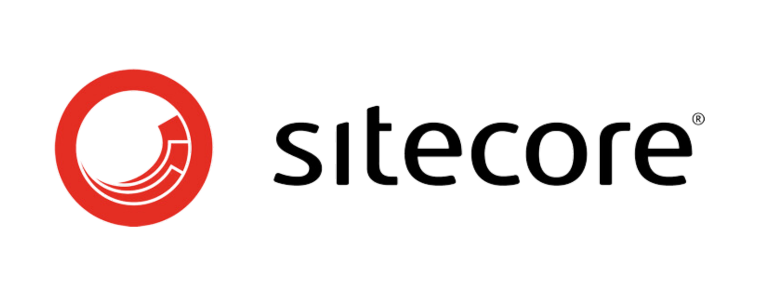In today’s fast-paced digital world, the need to improve content operations has become increasingly essential for businesses to stay competitive. The effective use of technology enables organizations to streamline their content operations, ensuring higher efficiency and a better return on investment. In this article, I will discuss the tools and techniques that can be utilized to enhance content operations and management.
Assessing Content Operations Challenges
A. Identifying Common Content Bottlenecks and Pain Points
Before diving into technological solutions, it’s crucial to understand the challenges faced in content operations. Some common pain points include:
- Inefficient workflows: Content creation, editing, and publishing involve several steps, and without a well-defined process, these steps can become disorganized and time-consuming. Inefficient workflows can lead to delays, errors, and miscommunication.
- Difficulty in managing multiple content formats and channels: Businesses often need to create and manage various content formats (e.g., blog posts, videos, social media posts) and publish them across different channels (e.g., websites, social media platforms, email). Juggling multiple formats and channels can be overwhelming, leading to inconsistencies and missed opportunities.
- Lack of collaboration among team members: Efficient content operations require seamless communication and collaboration between team members, including writers, editors, designers, and marketers. When collaboration is lacking, it can result in duplicated efforts, misaligned messaging, and delays in content production.
- Inadequate content performance tracking: Without proper tracking and measurement of content performance, businesses cannot identify areas for improvement or assess the impact of their content efforts. This can lead to wasted resources and poor decision-making.
B. Analyzing the Impact of Inefficient Content Operations on Businesses
Inefficient content operations can have a domino effect on various aspects of a business, such as:
- Reduced productivity and increased costs: When content workflows are inefficient, team members spend more time on tasks than necessary, leading to reduced productivity and increased costs. This can negatively impact a company’s bottom line.
- Inability to meet customer expectations and demands: With the ever-evolving digital landscape, customers expect relevant, engaging, and up-to-date content. Inefficient content operations can hinder a business’s ability to meet these expectations, resulting in dissatisfied customers and lost opportunities.
- Compromised brand reputation and visibility: Inconsistent messaging, outdated content, and lack of a cohesive content strategy can lead to a damaged brand reputation and reduced visibility in the market. This can make it challenging for businesses to attract and retain customers.
- Hindered growth and scalability: Inefficient content operations can stifle a company’s ability to grow and scale, as resources are wasted on tasks that do not contribute to growth. This can prevent businesses from reaching their full potential and limit their competitiveness in the market.
C. Highlighting the Importance of Addressing These Challenges
To improve content operations and overcome these challenges, businesses must adopt suitable tools and techniques, ensuring a seamless workflow and streamlined processes. By addressing these pain points, organizations can:
- Increase productivity and reduce costs
- Enhance customer satisfaction and engagement
- Strengthen brand reputation and market visibility
- Enable growth and scalability
Embracing Technology: Key Tools and Techniques
A. Content Management Systems (CMS)
A CMS simplifies the process of creating, managing, and publishing content. The benefits of using a CMS include:
- Centralized content storage and access: A CMS allows businesses to store all their content in one central location, making it easier for team members to find, access, and modify content.
- User-friendly interface for non-technical users: Most CMS platforms have intuitive user interfaces, enabling non-technical team members to create and manage content with minimal training.
- Easy collaboration among team members: A CMS facilitates collaboration by providing features like version control, real-time editing, and access control, enabling team members to work together efficiently.
- Streamlined content workflows: A CMS helps automate and streamline content workflows by providing tools for scheduling, publishing, and updating content across multiple channels.
Some popular CMS platforms that can improve content operations include:
B. Artificial Intelligence (AI) and Machine Learning (ML) in Content Creation
AI-Powered Content Generation Tools
AI-driven content generation tools, like GPT-4 based language models, can accelerate content creation by providing suggestions, outlines, and even full drafts. These tools can:
- Save time in content ideation and creation: By generating content ideas and suggestions, AI-powered tools can speed up the content creation process and reduce the time spent on brainstorming and drafting.
- Provide data-driven insights and recommendations: AI-driven tools can analyze data from various sources to provide insights and recommendations on topics, keywords, and other content elements.
- Ensure consistent brand voice and messaging: AI-powered content generation tools can be trained to maintain a consistent brand voice and messaging across all content assets.
ML-Driven Content Optimization and Personalization
Machine learning can help improve content operations by analyzing user behavior and preferences, leading to better content optimization and personalization. Benefits include:
- Enhanced user engagement: Personalized content is more engaging and relevant to users, leading to increased time spent on site and higher engagement rates.
- Increased content relevance: ML algorithms can analyze user data to identify trends and preferences, allowing businesses to create content that is more relevant and valuable to their audience.
- Higher conversion rates: Personalized content has been shown to increase conversion rates, as users are more likely to take action when presented with content that resonates with their interests and needs.
C. Automation and Workflow Management
Tools for Automating Repetitive Tasks
Automation tools can handle repetitive tasks, such as content scheduling and social media posting, allowing your team to focus on more strategic work. Some popular automation tools are:
Zapier: A powerful automation tool that connects various apps and services, enabling users to create custom workflows and automate tasks.
IFTTT: A user-friendly automation platform that allows users to create simple “if this, then that” rules to automate tasks between apps and services.
Buffer: A social media management tool that allows users to schedule, publish, and analyze their social media content, streamlining their social media operations.
Hootsuite: A comprehensive social media management platform that offers features for scheduling, monitoring, and analyzing social media content, helping businesses save time and improve their online presence.
Techniques for Streamlining Content Workflows
To further improve content operations, implement workflow management techniques like:
- Establishing a clear content creation process: Define the steps involved in content creation, from ideation to publication, and assign roles and responsibilities for each step. This clarity can lead to a more efficient and organized workflow.
- Setting up approval workflows and deadlines: Implement a system for content review and approval, with clear deadlines for each stage, to ensure that content is produced on time and meets quality standards.
- Using project management tools like JIRA or Monday: Project management tools can help organize and track content projects, improving communication and collaboration among team members.
Conclusion
In conclusion, leveraging technology to improve content operations is essential for businesses to stay competitive in the digital age. By adopting the right tools and techniques, organizations can streamline their workflows, enhance collaboration, and make data-driven decisions for better content performance.
To recap, here are the key takeaways:
- Assess and address common content operation challenges
- Embrace technology through CMS, AI and ML, automation, and analytics tools
- Integrate tools and techniques for a seamless content operation workflow
- Train your team to effectively leverage technology
- Monitor and optimize content operations through KPIs and regular reviews
- Stay up-to-date with technological advancements in content operations
By following these steps, businesses can successfully improve content operations and maximize the potential of their content strategy. Embracing technology not only streamlines content production and management but also enables businesses to make smarter decisions, resulting in higher quality, more relevant, and engaging content that drives success.
In a fast-paced digital world, staying ahead of the curve and continually optimizing your content operations will ultimately lead to improved customer satisfaction, increased brand visibility, and a stronger competitive advantage for your business.






